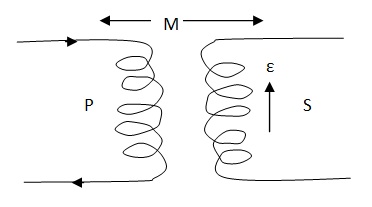Mutual Induction
Mutual Induction Assignment Help | Mutual Induction Homework Help
Mutual Induction
When the current flowing in the coil P changes, the magnetic flux linked with the neighboring coil S also changes. Hence an induced em is set up in coil S. This phenomenon is called mutual induction. The circuit in which the current changes is called the primary circuit. The neighboring circuit in which the emf is induced is called the secondary circuit. Any two circuits in which there is mutual induction are known as mutually coupled circuits.Let I = current in the primary coil P. The magnetic flux Φ through the secondary coil S depends upon I.
Φ ∞ I
or Φ = MI … (1)
where M is the coefficient of mutual induction or simply mutual inductance of the two circuits.
If I = 1, Φ = M.
The mutual inductance of two circuits is numerically equal to the magnetic flux linked with one circuit, when unit current flows through the other.
The emf induced in S is given by
ε = - dΦ /dt = - M dI / dt … (2)
If dI /dt = 1, then ε = M (numerically).
The mutual induction of two circuits is numerically equal to the e.m.f. in one circuit when the rate of change of current in the other is unity.
In Eq. (2), if ε is in volt and dI/dt in ampere per second, then the mutual inductance is in henry. Hence the mutual inductance between two circuits is 1 henry if a change of current equal to 1 As-1 in one circuit induces an emf of 1 volt in the other circuit.
The mutual inductance depends on the size, shape number of turns and relative orientation of the tow coils. It also depends on the nature of the medium between the two coils.

For more help in Mutual Inductance click the button below to submit your homework assignment.